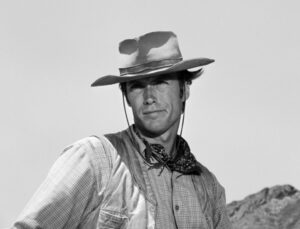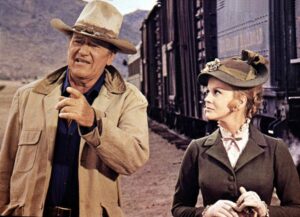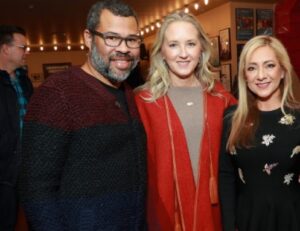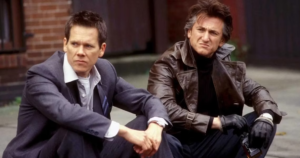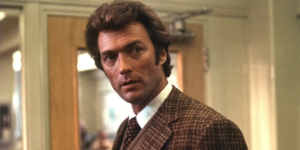How John Carpenter’s Assault On Precinct 13 Remade John Wayne’s Rio Bravo

Here’s how John Carpenter’s Assault On Precinct 13 remade John Wayne Western classic Rio Bravo. Carpenter grew up during the ’50s and came to fall in love with both Westerns and horror movies. In fact, he stated his urge to become a filmmaker largely stemmed from wanting to direct Westerns.
Unfortunately, the genre had declined to the point where few Westerns were being produced by major studios by the time his career began. His breakthrough Halloween – which he co-wrote, scored and helmed – was a landmark that also somewhat left him typecast in horror. While he branched out with the occasional comedy (Memoirs Of An Invisible Man) or love story (Starman), even they contained some sci-fi or horror elements to them.
John Carpenter’s movies always managed to sneak his love for Westerns into them. Vampires is arguably the closest he came to the genre, with its amoral anti-heroes and dusty desert locales, while They Live begins with Roddy Piper’s nameless drifter wandering into L.A. to clean it up. One of Carpenter’s personal favorites is Rio Bravo, a 1959 Western starring John Wayne, Dean Martin and Angie Dickinson. The story sees Wayne’s sheriff holding onto a dangerous prisoner, with the latter’s rich brother Burdette paying gunmen to try and break him out of an isolated jail and kill whoever gets in their way. Wayne made Rio Bravo as a rebuke to 1952 classic High Noon, and with 1976’s Assault On Precinct 13, Carpenter sought to tell a similiar story his own way.
Carpenter’s Assault On Precinct 13 & Ghosts Of Mars Riff On Rio Bravo
The film sees a near-supernatural street gang lay siege to an isolated, nearly closed down police station. Of course, on the surface Rio Bravo and Assault On Precinct 13 don’t share much in common. The latter is set in the ’70s and is much darker and grittier than Wayne’s film. Instead of being a straight siege movie, Rio Bravo is oddly leisurely in its pacing. Much of the story is Wayne’s sheriff hanging out with his oddball assortment of allies or awkwardly romancing Dickinson’s Feathers, with the occasional action scene thrown in. One of the most important elements of Assault On Precinct 13 – where the cops and criminals are forced to work together – is completely absent from Rio Bravo (a favorite of Quentin Tarantino too).
That said, the two films share DNA. Assault On Precinct 13 took its central conceit of protecting a jail from Rio Bravo, with Carpenter using the pseudonym “John T. Chance” – the name of Wayne’s sheriff – for his editing credit. Laurie Zimmer’s Leigh is named after Rio Bravo screenwriter Leigh Brackett, who also fits into the strong “Hawksian” woman archetype of director Howard Hawks. The scene where blood drips on a police car is another Rio Bravo nod, where a wounded killer accidentally reveals his position to Dean Martin’s deputy when his blood drips down from the ceiling.
Even the finale where Wayne’s sheriff uses some dynamite to root out the rest of the outlaws is remixed in Assault On Precinct 13, where an oxygen tank is used during a desperate last stand. Rio Bravo got a trilogy of sorts, as it was essentially remade twice with El Dorado and Rio Lobo, which offered slight variations on the same story beats. Carpenter did the same with Ghosts Of Mars, which could be dubbed “Assault On Precinct 13 In Space!” It sees a remote outpost under siege by Martian-possessed miners, with a cop and criminal having to work together to survive the night. The latter also offered Jason Statham his first action role, but despite rumors, it was never supposed to be a third Snake Plissken movie.

